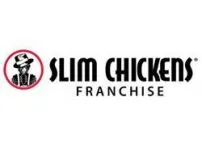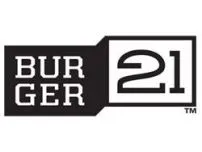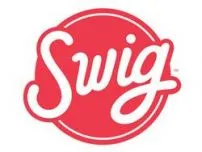Summary
U.S. restaurants are a $1.5T business in 2025, but unit economics swing hard by state. Average retail rent is $24.92/sf/yr nationwide, yet top walkable districts run $40–90/sf and Manhattan corridors reach $600+/sf. Front-of-house staff earn ≈$16.2/hr, cooks ≈$17–18/hr, managers ≈$65K/yr. Power is 13¢/kWh on average, from 7–10¢ low-cost states to 30–37¢ in CA/HI. Add sales tax on prepared food (0–9.5%+ by state) and liquor licenses that can cost $100→$400K+ in quota markets.
A restaurant franchise gives owners a proven operating model — standardized recipes, training, vendor leverage, branded tech — while still leaving space to make local decisions on real estate, hiring, and daypart mix. The category is wide: it runs from fast casual built around counter service and high throughput, to full-service (FSR) with table service and bar programs, to bar & grill formats with alcohol and game-day peaks. What unites them is the playbook: menu engineering, inventory controls, labor templates, and clear P&L guardrails. For first-time buyers, restaurant franchise opportunities remove guesswork and shorten ramp-up; for multi-unit operators, development schedules and territory options let them compound openings across trade areas.
Industry context. The National Restaurant Association projects $1.5 trillion in U.S. foodservice sales in 2025 and about 15.9 million jobs — demand is there, but operators list labor, food, and energy as the pressure points. Off-premise (drive-thru, pickup, delivery) now accounts for most traffic, so kitchens must cook for dine-in and takeout at the same time.
Cost environment to surface in the copy
1. Rent and sites
- U.S. average asking retail rent: $24.92/sf/year (Q3 2025).
- Popular walkable / lifestyle districts: $40–90/sf (NYC $91.4/sf for LWP; prime Manhattan corridors → $600+/sf).
- Takeaway: the same fast-casual box can pay 3–10× rent depending on zip code, so we always model at least two site-cost scenarios.
2. Power (commercial, Aug 2025, EIA)
- Low-cost states (ND, TX, parts of the Midwest): ≈7–10¢/kWh
- Sunbelt / FL / most of East: ≈11–13¢/kWh
- CA, New England, HI: 20–37¢/kWh
Full-service restaurants run hoods, dish, walk-ins and HVAC, so a move from 11¢ to 25¢/kWh shows up fast in operating expenses.
3. Labor (BLS, May 2024–25)
- Waiters & waitresses: $16.23/hr median.
- Cooks, restaurant: ≈$17.2–17.7/hr median.
- Food service managers: $65,310/year median.
- Tipped minimum: federal cash wage $2.13/hr + tip credit to reach $7.25/hr, but many states (CA, AK, MN, etc.) require full state minimum for tipped staff. Add a note that compliance on tip credit is heavily enforced.
4. Sales tax on prepared food (midyear 2025)
- High end: AR 9.48%, AL 9.44%, TN 9.25–9.55% with locals.
- Big states: CA 7.25%, TX 6.25% + local, FL 6% + local.
- Low/no: DE, MT, NH, OR — 0% state, but local fees may apply.
Message for the page: “check your state/local combined rate; it can add 6–10% to every ticket.”
5. Liquor licensing (for bar & grill / FSR with alcohol)
- Non-quota states: often $100–$3,000 application + annual renewal.
- CA example: 2025 fees indexed +3.65%.
- Quota / scarce-license markets (NJ, PA, NM, some FL counties): $50 → $450,000+ depending on availability and transfer. Put a one-liner: “budget for licensing early; it may exceed your kitchen equipment.”
Restaurant Franchises in the USA (enriched version)
Restaurant demand in the U.S. has permanently shifted toward flexibility: dine-in still matters for experience, alcohol, and check size, while delivery and pickup capture convenience and extra occasions. That means layouts, cooklines, expo/staging and staffing plans must serve two channels at once — seated guests and off-premise orders. Brands that protect unit economics in 2025 focus on daypart mix (lunch, dinner, late-night, weekends), speed to table or handoff, and labor productivity — table turns for full service, order throughput for fast casual. With the right site and ops cadence, a restaurant franchise in the USA can deliver stable contribution margins and a clearer path to multi-unit expansion, even with labor and energy costs elevated.
Investment and Fees (with 2025 cost context)
Below are indicative restaurant franchise cost ranges by common formats. Actual figures vary with footprint (inline, end-cap, freestanding), build-out scope (hood, venting, grease trap), equipment package, and local labor/lease rates.
| Format / Model | Initial investment (range) | Franchise fee (range) | Ongoing fees (royalty / ad fund) |
|---|---|---|---|
| Fast casual (counter service) | $500,000–$1,300,000 | $25,000–$50,000 | 4–6% / 1–3% |
| Full-service (FSR, no bar) | $900,000–$2,200,000 | $30,000–$60,000 | 4–6% / 1–3% |
| Bar & grill (FSR with liquor license) | $1,200,000–$3,000,000 | $30,000–$60,000 | 4–6% / 1–3% |
| Ghost kitchen / small takeout unit | $150,000–$450,000 | $10,000–$30,000 | 4–6% / 0–2% |
Cost overlay:
| Cost driver | Low-rent state / second-gen inline | Coastal / tourist / walkable district |
|---|---|---|
| Base rent | $20–25/sf/yr | $40–90+/sf/yr (Manhattan prime $600+/sf) |
| Power | 9–13¢/kWh | 20–37¢/kWh |
| Hourly FOH (servers) | $16–17/hr | $18–22/hr (no tip credit in CA etc.) |
| Sales tax on meals | 0–6% | 7–9.5%+ |
| Liquor license | $100–$3,000 | $10,000–$400,000+ (quota / transfer) |
Startup costs and ongoing fees
Startup typically includes flooring and plumbing, hood/venting and grease trap (big swing item), kitchen line (ranges, fryers, ovens, refrigeration, dish), furniture and fixtures for FSR, POS/KDS, signage, opening inventory, training, and working capital. Ongoing costs combine:
- royalty + brand marketing fund;
- labor (servers at $16.2/hr, cooks at $17–18/hr, managers at ≈$65K/yr);
- food & beverage (watch meat, cheese, and produce volatility);
- occupancy (rent, CAM, insurance, local business taxes);
- utilities (use your state kWh from EIA);
- licenses & inspections (fire, health, and, if applicable, alcohol);
- delivery commissions (third-party apps 15–30% on delivery, ≈6% on pickup).
On the P&L, three levers dominate: food cost %, labor %, and occupancy. Menu engineering (combos, LTOs, price by channel), labor design (section sizes, cross-trained line), and real estate choice (second-gen vs ground-up) decide how fast the unit gets to breakeven.
Popular restaurant franchise formats
Fast casual. Counter service, smaller front-of-house, high throughput, strong takeout/delivery mix, simpler labor and smaller check — best where rent is high and traffic is frequent.
Full service (FSR). Table service, bigger dining rooms, potential for higher check via appetizers, desserts, and occasions; more complex labor, more sensitive to wage and liquor rules.
Bar & grill. FSR + alcohol, game-day and late-night traffic, profit centers in draft/cocktails; needs liquor license, staff training, and compliant storage. In some states the liquor license may be the single biggest line item after build-out.
Ghost / takeout-only. Lean front-of-house, delivery-first; trades visibility for lower capex and faster openings; works better in states/cities with high rent and strong delivery culture.
Requirements & ideal franchisee profile
Systems generally seek owners with adequate liquid capital and net worth, strong people leadership, and discipline with checklists and food safety. Restaurant background helps, but structured training can close the gap for motivated operators. Multi-unit candidates should plan for an opening cadence, a management bench (GMs, KM/BOH leads), and vendor programs that scale. For a restaurant franchise with a bar program, add licensing steps, staff alcohol certifications, and ID/barring procedures — these change by state and sometimes by county. Site selection still matters: visibility, ingress/egress, parking, and co-tenancy that matches the daypart strategy.
Trends & unit-economics drivers to keep from 2025 sources
- Off-premise integration: 75% of restaurant traffic involves takeout/drive-thru/pickup; expo/staging needs to be built in.
- Labor productivity: cross-training, simplified menus, and station design to fight $16–20/hr FOH/BOH.
- Menu engineering: LTOs and bundled offers lift traffic without killing throughput.
- Tech: POS, KDS, loyalty — to tighten ticket times and improve repeat.
- Real-estate agility: second-gen inline/end-cap to hold capex down when rents are $40+/sf.
Franchise FAQ
What is the initial franchise fee?
The initial franchise fee depends on the brand and market, usually from $10,000 to $60,000.
Do you help with international expansion?
Yes, TopFranchise works with brands that are ready to expand to new countries and regions.
How can I contact the franchisor?
You can fill in the request form on the franchise page, and the brand representative will contact you.

















